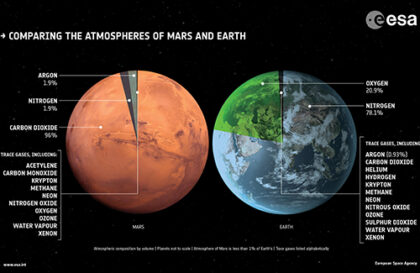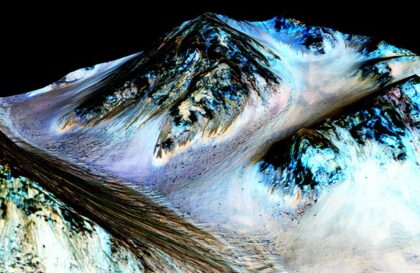Have you ever wondered why Mars is often referred to as the “Red Planet”? The answer lies in the mysterious minerals that cover its surface, commonly known as rust. Iron-rich minerals on the Martian surface oxidize to form iron oxide, which imparts a reddish hue to the soil and rocks. Hematite (Fe2O3) significantly contributes to this coloration, and silicates and sulfates also play roles in the process.
In addition to its striking appearance, Mars harbors a record-breaking secret that distinguishes it within the vast expanse of our solar system.
Meet Mount Olympus, a colossal and awe-inspiring mountain that calls Mars its home. Standing as the highest peak in our solar system, Mount Olympus reaches an astonishing height of 26 kilometers from its base. To put that into perspective, it towers over the tallest volcano on Earth, Mauna Kea, by a staggering 2.5 times. Mauna Kea, which rises 10.2 kilometers from its base, is the highest volcano on our home planet.
With a diameter spanning about 540 kilometers, Mount Olympus is a true giant among mountains. Its slopes are breathtaking, with edges that rise as high as 7 kilometers. The sheer magnitude of these cliffs has puzzled scientists for years, and while many theories have been proposed, a definitive explanation for their formation remains elusive.
One intriguing hypothesis suggests that the colossal cliffs were shaped by the actions of an ancient ocean that once covered parts of Mars. The notion of underwater forces gradually undermining the volcano’s slopes paints a vivid picture of the planet’s dynamic past. However, as with many mysteries of the universe, the truth might be even more intricate than we can currently imagine.
Mount Olympus is an extinct volcano, formed due to lava flows that erupted from its interior and solidified on the surface. These eruptions took place over extended periods, as indicated by the volcano’s diameter, which is nearly 25 times its absolute height.
An analysis of images from the Mars Express probe revealed that the most recent lava on the slopes of Mount Olympus is estimated to be around 2 million years old. Consequently, the possibility of the volcano reactivating cannot be entirely ruled out.






